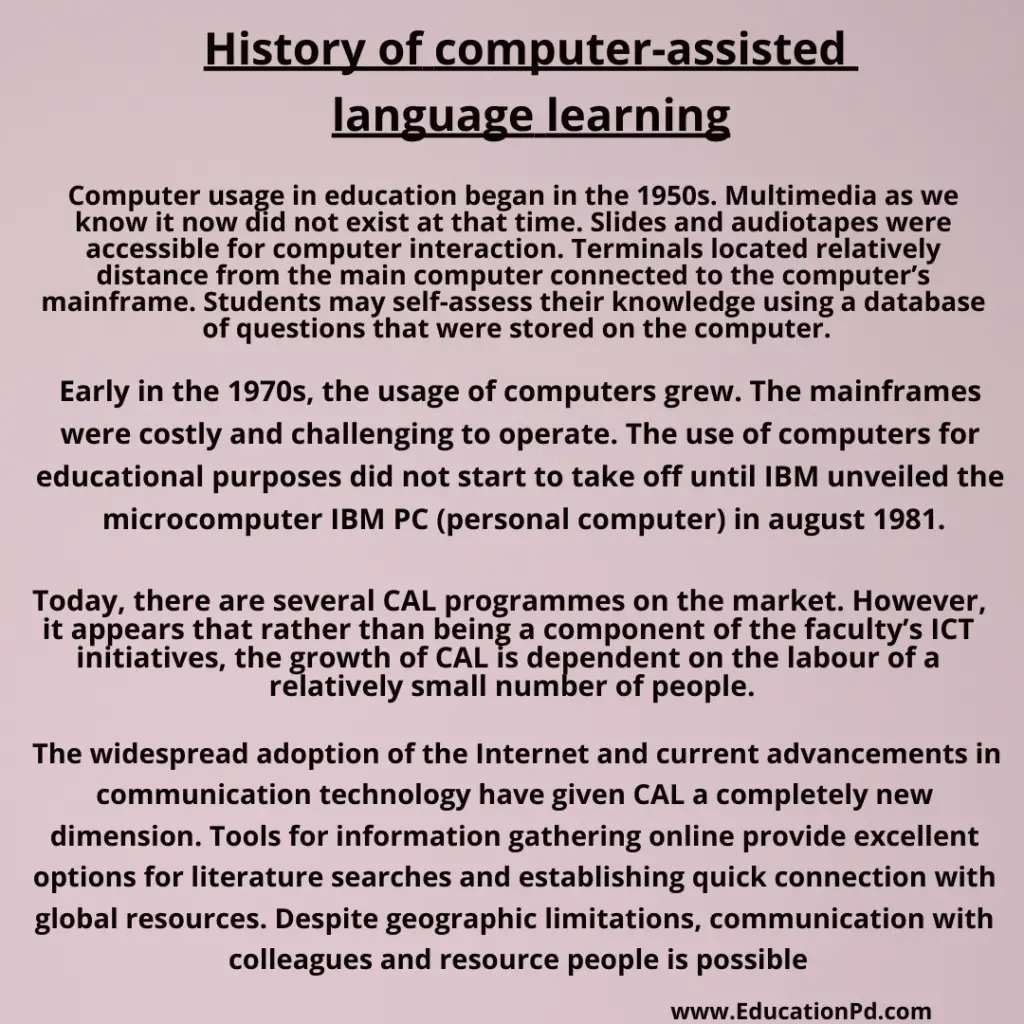Back to: Educational Technology in Education B.ed Notes, M.A Notes, IGNOU Notes
History of computer-assisted language learning
Computer usage in education began in the 1950s. Multimedia as we know it now did not exist at that time. Slides and audiotapes were accessible for computer interaction. Terminals located relatively distance from the main computer connected to the computer’s mainframe. Students may self-assess their knowledge using a database of questions that were stored on the computer.
Early in the 1970s, the usage of computers grew. The mainframes were costly and challenging to operate. The use of computers for educational purposes did not start to take off until IBM unveiled the microcomputer IBM PC (personal computer) in august 1981.
Today, there are several CAL programmes on the market. However, it appears that rather than being a component of the faculty’s ICT initiatives, the growth of CAL is dependent on the labour of a relatively small number of people.
The widespread adoption of the Internet and current advancements in communication technology have given CAL a completely new dimension. Tools for information gathering online provide excellent options for literature searches and establishing quick connection with global resources. Despite geographic limitations, communication with colleagues and resource people is possible.
Numerous databases and programmes are already hosted on the Internet, making them accessible to all types of dental professionals and students for efficient and affordable distance learning.
